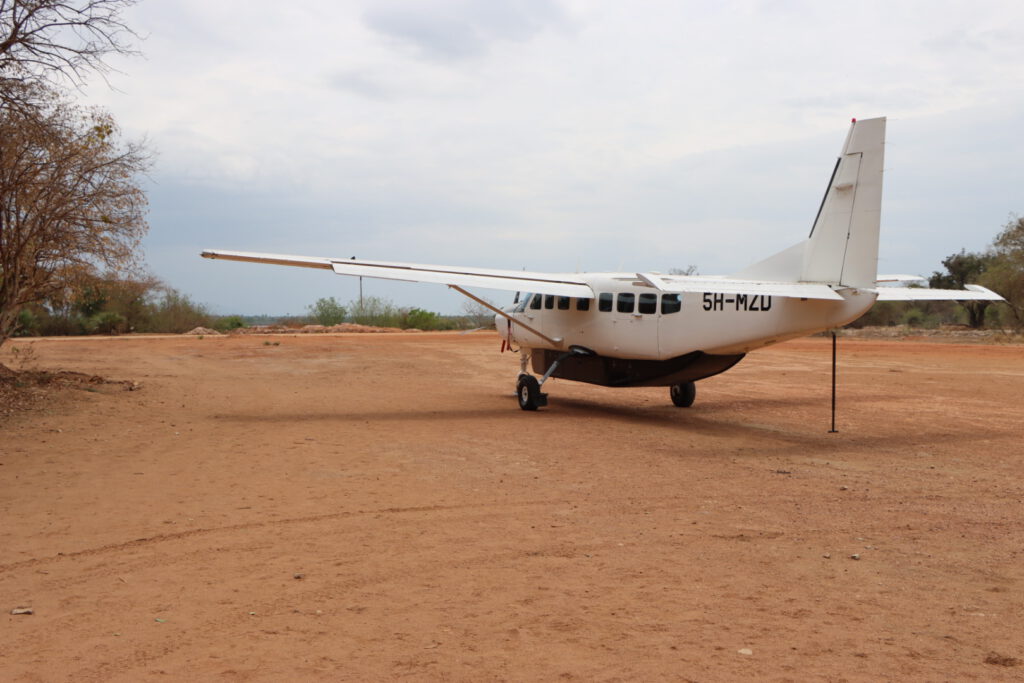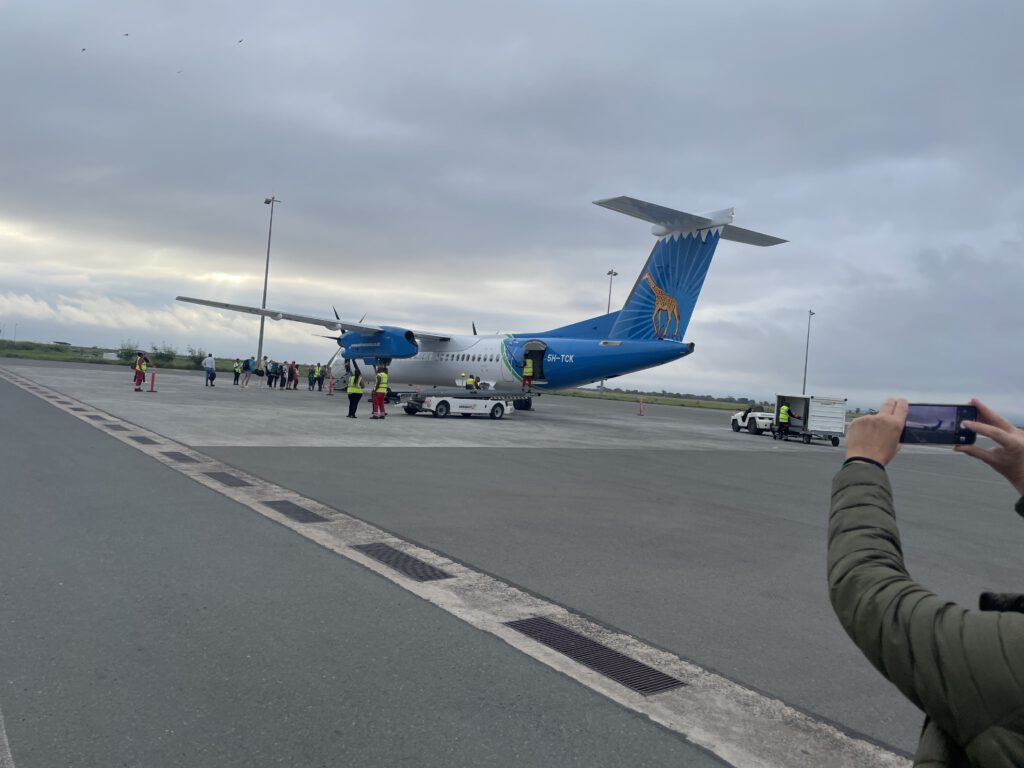Comprehensive Guide to Getting to Nyerere National Park
Nyerere National Park, one of Tanzania’s most spectacular wildlife destinations, is accessible through a variety of travel options that cater to different budgets and preferences. This guide will cover international flights, domestic connections, travel by road, train, and air, as well as practical tips for entering the park through its gates.
Step 1: International Travel to Tanzania
To begin your journey to Nyerere National Park, you’ll need to fly into Tanzania. The country’s two primary international airports are:
- Julius Nyerere International Airport (DAR) – Dar es Salaam
- Closest major hub to Nyerere National Park (~240 km away).
- Kilimanjaro International Airport (JRO) – Arusha
- Further away (~10 hours by road), mainly for visitors to Tanzania’s northern parks.
Major Airlines and Booking Links
Several international airlines serve Tanzania with regular connections. Here are the top airlines and their websites:
- KLM Royal Dutch Airlines: www.klm.com
- Qatar Airways: www.qatarairways.com
- Emirates: www.emirates.com
- Turkish Airlines: www.turkishairlines.com
- Ethiopian Airlines: www.ethiopianairlines.com
- Kenya Airways: www.kenya-airways.com
Estimated Round-Trip Ticket Prices:
- From the United States: $1,000–$1,800.
- From Europe: €500–€1,200.
- From Asia: $700–$1,500.
- From African countries: $300–$800.
Book tickets 3–6 months in advance to secure the best prices, especially during peak safari season (June–October).
Step 2: Domestic Travel Options to Nyerere National Park
After arriving in Tanzania, you can reach Nyerere National Park via air, road, or train. Here’s a breakdown of each option:
Option 1: Fly-In Safaris (Fastest and Most Convenient)
Fly-in safaris are a popular choice for travelers who value convenience. These flights depart from Julius Nyerere International Airport (DAR) and land directly in the park.

Airstrips in Nyerere National Park
- Mtemere Airstrip: Close to Mtemere Gate and the Rufiji River.
- Kiba Airstrip: Ideal for accessing the Beho Beho Hills and northern parts of the park.
Flight Details
- Airlines:
- Flight Duration: 45–60 minutes from Dar es Salaam.
- Cost:
- One-way: $250–$350 per person.
- Round-trip: $500–$700 per person.
Advantages:
- Saves significant travel time.
- Offers aerial views of the park’s stunning landscapes.
- Direct access to remote areas of the park.
Option 2: By Road (Adventurous and Cost-Effective)
Route to Mtemere Gate (Eastern Gate)
- Distance: ~240 km (150 miles) from Dar es Salaam.
- Travel Time: 4.5–5.5 hours.
- Best For: Lodges and camps near the Rufiji River.
- Road Conditions: Paved highways for most of the journey, with some gravel roads near the gate.
Route to Matambwe Gate (Northern Gate)
- Distance: Slightly farther than Mtemere Gate (~260 km).
- Travel Time: 5–6 hours.
- Best For: Accessing the Beho Beho Hills and the park’s northern woodlands.
Private Transfers
- Many tour operators offer private 4×4 transfers to the park.
- Cost: $150–$300 per vehicle (one way).
Self-Drive Tips
- Ensure your vehicle is a 4×4, as some sections can be challenging during the rainy season.
- Carry a reliable GPS or map, as signage can be limited near the park gates.
Option 3: Travel by Train (Budget-Friendly with Scenic Views)
For a unique and budget-friendly adventure, consider traveling by the TAZARA Railway. The railway connects Dar es Salaam to Mbeya, passing through the Selous Game Reserve (now part of Nyerere National Park).
TAZARA Train Details
- Route: Dar es Salaam to Fuga or Kisaki Stations (closest stops to Nyerere National Park).
- Travel Time: 6–8 hours to Kisaki Station.
- Class Options:
- First Class: ~$20 (air-conditioned, private compartments).
- Economy Class: ~$10 (basic seating).
- Website: www.tazarasite.com
From Train Station to Park Gate
- Fuga Station: Closest to Matambwe Gate (20–30 km by road).
- Kisaki Station: Transfers to Matambwe Gate (~30 km).
Train journeys provide a chance to see rural Tanzania and spot wildlife en route. However, schedules can be unreliable, so plan extra time for potential delays.
Step 3: Park Entry Points
Nyerere National Park has two primary entry gates:
- Mtemere Gate:
- Eastern side of the park, near the Rufiji River.
- Best for visitors staying in lodges or camps along the river.
- Matambwe Gate:
- Northern side, closer to the Beho Beho Hills.
- Ideal for exploring woodlands and the northern plains.
Both gates are well-staffed, and payments for entry fees must be made by credit card (VISA or Mastercard). Cash is not accepted.
Estimated Costs for Visiting Nyerere National Park
Here’s a rough budget breakdown for different types of travel:
| Expense | Budget | Mid-Range | Luxury |
|---|---|---|---|
| International Flights | $800–$1,200 | $1,000–$1,500 | $1,500+ |
| Domestic Flights | $500–$700 | Same | Same |
| Train to Kisaki/Fuga | $20 | Same | Not Applicable |
| Park Fees (per day) | $50 (adult) | Same | Same |
| Accommodation (per night) | $50–$150 | $250–$400 | $500–$1,000+ |
| Safari Activities (per day) | $150–$200 | $200–$300 | $300+ |
Total Estimated Cost (3 Days):
- Budget: $1,200–$1,800.
- Mid-Range: $2,500–$4,000.
- Luxury: $5,000+.
Best Travel Times
- Dry Season (June–October):
- Excellent for wildlife viewing as animals gather at water sources.
- Ideal weather and fewer mosquitoes.
- Wet Season (November–May):
- Lush scenery and incredible birdwatching. Roads may be muddy.
Conclusion
Nyerere National Park is a versatile destination with various ways to reach its pristine wilderness. From the luxury of fly-in safaris to the charm of a train journey through the countryside, each travel option offers unique experiences. Plan ahead, choose the route that suits your budget and preferences, and prepare to immerse yourself in one of Africa’s most breathtaking natural wonders.
For more information, visit official resources such as:
